Best Bass Fishing Lures for Beginners
1. Introduction to The Best Bass Fishing Lures for Beginners
Bass fishing, for many, is more than just a pastime—it’s a way of life. Originating from the southern United States in the late 19th century, this sport has grown exponentially in popularity, capturing the hearts of anglers worldwide. The thrill of the chase, the strategy involved, and the sheer joy of reeling in a big catch make bass fishing an exhilarating experience. In order to feel that exhilaration you have to know the best bass fishing lures for beginners. Without the correct lure, you might as well stay at home and fish in your swimming pool.
The Allure of the Bass
The bass, a cunning and robust fighter, is a prized catch among freshwater anglers. There are primarily two types of bass that anglers target: the largemouth and the smallmouth bass. Each has its unique characteristics, habitats, and challenges, making the pursuit ever so intriguing.
Starting Your Bass Fishing Journey
For those new to the sport, the journey begins with understanding the basics. From selecting the right gear to understanding the habits of the bass, there’s a lot to learn. One of the most crucial decisions an angler has to make is choosing the right lure. With a myriad of options available, from jigs to spinnerbaits, the choice can be overwhelming. But fear not, as this guide aims to simplify that decision, ensuring you’re well-equipped for your next fishing adventure.
The Community and Culture
Beyond the technical aspects, bass fishing has a rich culture and community. From local fishing clubs to global tournaments, there’s a sense of camaraderie among bass anglers. Sharing stories of the one that got away, exchanging tips, and celebrating each other’s successes are all part and parcel of the bass fishing experience.
In conclusion, bass fishing is not just about catching fish; it’s about the memories made, the knowledge gained, and the bonds formed. Whether you’re fishing from the shore of a local pond or on a boat in a vast lake, the essence remains the same: it’s a pursuit of passion, patience, and perseverance.
2. Why Lures Matter
Lures are the heart and soul of bass fishing. They’re the tools that mimic the natural prey of bass, enticing them to strike. The right lure can make the difference between a successful fishing trip and going home empty-handed. Lures are designed to appeal to the bass’s senses – sight, sound, and vibration. By understanding the behaviour and preferences of bass, anglers can select lures that increase their chances of making a catch.
The Science Behind the Lure
Bass are predatory fish with keen senses. They rely on their vision, lateral line (a system that detects vibrations), and sense of hearing to locate prey. Lures are crafted to exploit these senses. For instance, some lures are designed to reflect light, catching the attention of bass from a distance. Others produce vibrations or sounds that mimic struggling prey, triggering the predatory instincts of the bass.
The Art of Presentation
It’s not just about having the right lure; it’s about presenting it correctly. How a lure moves through the water, its speed, depth, and action, can all influence a bass’s decision to strike. Mastering the art of lure presentation is a skill that comes with experience and observation.
Certainly! Let’s delve deeper into the types of bass fishing lures, especially focusing on their suitability for beginners:
3. Types of Bass Fishing Lures for Beginners
For those new to the world of bass fishing, the sheer variety of lures available can be overwhelming. Each lure is designed with a specific purpose in mind, tailored to mimic different types of prey and work in various water conditions. Here’s a more detailed breakdown of some of the most beginner-friendly bass fishing lures:
Spinnerbaits
Design & Features: Spinnerbaits are distinguished by their metal blades that spin like a propeller when the lure is retrieved. They often have a “safety pin” design, which helps prevent snagging.
Why They’re Great for Beginners:
- Versatility: Suitable for various water conditions, from clear to murky.
- Visibility: The spinning blades create a flash, making them highly visible to the bass.
- Action: The vibration from the spinning blades mimics the movement of small baitfish, a favourite snack for bass.
Tips for Using: Cast and retrieve steadily, or try a “stop and go” retrieval to mimic a wounded baitfish.
Crankbaits
Design & Features: Crankbaits are typically made of hard plastic and come in various shapes and sizes. They have a lip at the front, which determines how deep the lure dives when retrieved.
Why They’re Great for Beginners:
- Depth Variety: Available in shallow, medium, and deep-diving varieties, allowing beginners to explore different water depths.
- Natural Appearance: Designed to resemble baitfish or crawfish, making them irresistible to bass.
- Ease of Use: Simple cast and retrieve method.
Tips for Using: Pay attention to the lure’s wobbling action. A steady retrieve is often enough, but occasional pauses can entice hesitant bass.
Topwater Lures
Design & Features: These lures float on the water’s surface and are designed to mimic prey like frogs, insects, or wounded fish.
Why They’re Great for Beginners:
- Visual Strikes: There’s nothing more thrilling than seeing a bass leap out of the water to grab your lure.
- Best Used During Dawn/Dusk: These are prime feeding times for bass, making topwater lures especially effective.
- Variety: From poppers to frog mimics, there’s a topwater lure for every scenario.
Tips for Using: Patience is key. After casting, let the ripples dissipate and then begin your retrieval. The pause can often lead to a strike.
Soft Plastics
Design & Features: Made of malleable plastic, these lures can resemble a variety of prey, from worms and lizards to crawfish.
Why They’re Great for Beginners:
- Versatility: Can be rigged in multiple ways, including Texas rig, Carolina rig, and wacky rig.
- Natural Movement: Their soft texture gives them a lifelike movement in the water, enticing bass.
- Suitable for Various Depths: Depending on the rigging method, soft plastics can be used at different depths.
Tips for Using: Experiment with different retrieval speeds. Sometimes, a slow and steady retrieve works best, while other times, a more erratic action is needed.
Absolutely! Let’s delve deeper into the top 5 bass fishing lures that are ideal for beginners:
4. Top 5 Best Bass Fishing Lures for Beginners
Embarking on the bass fishing journey can be both exciting and a tad overwhelming, especially when faced with the vast array of lures available. To simplify this for newcomers, we’ve curated a list of the top five lures that every beginner should have in their arsenal. These lures are not only effective but also relatively easy to use, making them perfect for those new to the sport.
Plastic Worms
Why They’re a Top Choice for Beginners:
- Simplicity: Plastic worms are straightforward to use. They can be incredibly effective even with basic rigging and a steady retrieve.
- Versatility: They can be rigged in multiple ways, such as Texas, Carolina, or wacky rig, allowing beginners to experiment and find what works best for them.
- Natural Appeal: Their lifelike movement in the water makes them irresistible to bass, especially when mimicking the worm’s natural undulating action.
Beginner Tip: Start with a Texas rig, as it’s weedless and great for fishing in areas with lots of cover.
Lipless Crankbaits
Why They’re a Top Choice for Beginners:
- Ease of Use: Cast and retrieve. The built-in wobble action does the rest.
- Coverage: They allow beginners to cover a lot of water quickly, increasing the chances of locating bass.
- Sound Advantage: Many lipless crankbaits come with internal rattles, adding an auditory element to attract bass.
Beginner Tip: Use a steady retrieve, but don’t be afraid to add occasional pauses or twitches to mimic injured baitfish.
Poppers
Why They’re a Top Choice for Beginners:
- Surface Action: Poppers operate on the water’s surface, providing beginners with a visual spectacle as a bass strike from below.
- Simplicity: Cast, let the ripples settle, and then retrieve with a pop-pop-pause rhythm.
- Ideal Conditions: They’re especially effective during dawn and dusk when bass are more active near the surface.
Beginner Tip: Patience is key. After the initial cast, wait a few seconds before starting your retrieve to entice curious bass.
Spinnerbaits
Why They’re a Top Choice for Beginners:
- Visibility: The spinning blades create a flash, making them highly visible, especially in murky waters or during overcast conditions.
- Versatility: They can be used in various water conditions and depths, making them a go-to lure for many situations.
- Weedless Design: The unique design of spinnerbaits helps prevent them from getting snagged in vegetation.
Beginner Tip: Try a slow-rolling retrieve in deeper waters or a faster retrieve in shallow areas.
Jigs
Why They’re a Top Choice for Beginners:
- All-Year Lure: Jigs can be effective throughout the year, in various water temperatures and conditions.
- Customisability: They can be paired with different trailers, like soft plastic craws or grubs, to change their appearance and action.
- Depth Versatility: Depending on the weight, jigs can be used in shallow flats or deep underwater structures.
Beginner Tip: Experiment with different trailers and retrieval techniques, such as hopping or dragging, to see what the bass prefer.
Certainly! Let’s delve deeper into the process of choosing the right lure, especially for beginners:
5. How to Choose the Best Bass Fishing Lure for Beginners
For those new to bass fishing, selecting the right lure can seem like a daunting task, given the myriad of options available. However, by understanding a few key factors about the fishing environment and bass behaviour, beginners can make informed decisions that will increase their chances of success. Here’s a comprehensive guide to help beginners choose the best bass fishing lures:
Water Clarity
Clear Water:
- Why: Bass rely heavily on their sight in clear water. Therefore, lures that closely mimic natural prey in appearance are more effective.
- Best Bass Fishing Lures for Beginners: Opt for lures with natural, subtle colours like green pumpkin or watermelon for soft plastics and shad or bluegill patterns for crankbaits.
Murky or Stained Water:
- Why: In reduced visibility, bass rely more on their lateral line to detect vibrations and movement.
- Best Bass Fishing Lures for Beginners: Brighter, more vibrant lures like chartreuse or firetiger can stand out. Lures that produce more vibration, like spinnerbaits or lipless crankbaits, are also effective.
Weather Conditions
Sunny Days:
- Why: Bright sunlight can drive bass to deeper waters or shaded areas to avoid the intense light.
- Best Bass Fishing Lures for Beginners: Diving lures like deep-diving crankbaits or weighted jigs can reach bass in deeper zones.
Cloudy or Overcast Days:
- Why: Cloud cover can make the bass more active and willing to explore shallower areas.
- Best Bass Fishing Lures for Beginners: Topwater lures like poppers or buzzbaits can be highly effective as bass are more likely to strike at surface prey.
Seasonal Behaviour
Spring (Spawn Season):
- Why: During the spawn, bass are protective of their nests and are more aggressive towards intruders.
- Best Bass Fishing Lures for Beginners: Soft plastics that mimic potential nest raiders, like lizards or crawfish, can trigger defensive strikes from bass.
Summer, Autumn, and Winter:
- Why: Bass behaviour varies with water temperature. In hotter months, they might seek deeper, cooler waters, while in colder months, they might be less active.
- Best Bass Fishing Lures for Beginners: In summer, deep-diving lures or jigs can be effective. In autumn, crankbaits and spinnerbaits that mimic baitfish can work well. In winter, slow-moving lures like jigs or soft plastics can entice less active bass.
Local Forage
Understanding the Ecosystem:
- Why: Bass primarily feed on what’s readily available in their environment.
- Best Bass Fishing Lures for Beginners: Research or observe the primary prey in the waters you’re fishing. If shad are prevalent, shad-patterned lures would be a good choice. If the area has a lot of frogs, consider frog-mimicking topwater lures.
6. Using Lures: Tips and Tricks for Beginners
Mastering the use of bass fishing lures is a journey that combines knowledge, skill, and intuition. While experience is the best teacher, understanding some fundamental tips and tricks can significantly enhance a beginner’s lure fishing experience. Here’s a more detailed exploration of these strategies:
Vary Your Retrieval Speed
Why It’s Important: Bass are opportunistic predators. An erratic or injured prey is an easier target, making it more enticing for a bass to strike.
Tips for Beginners:
- Start Slow: Begin with a slow and steady retrieve to gauge the bass’s mood.
- Introduce Twitches: Add occasional twitches or jerks to your retrieve to mimic a wounded fish.
- Pause Occasionally: A sudden pause can mimic a dying baitfish, often triggering a strike from a following bass.
Observe and Adapt
Why It’s Important: No two fishing days are the same. Conditions, bass mood, and other factors can vary, requiring anglers to adapt.
Tips for Beginners:
- Watch for Followers: Sometimes, bass might follow your lure without striking. If this happens, consider changing your retrieval speed or lure.
- Note Successful Techniques: If you get a bite, remember the retrieval technique you were using. It might work again.
- Don’t Be Afraid to Switch: If a particular lure isn’t getting any attention after several casts, consider switching to a different type or colour.
Practice Casting
Why It’s Important: Placing your lure accurately can mean the difference between catching a bass or going home empty-handed.
Tips for Beginners:
- Target Practice: Use objects like buoys or floating toys to practice your casting accuracy.
- Understand Your Gear: Different rods and reels have varied casting capabilities. Spend time getting to know your equipment.
- Use the Right Weight: The weight of your lure can affect your casting distance and accuracy. Ensure you’re using an appropriate weight for your gear and target area.
Learn from Others
Why It’s Important: The bass fishing community is vast and experienced. Learning from seasoned anglers can fast-track your skills.
Tips for Beginners:
- Join Local Clubs: Many areas have local fishing clubs that host events, workshops, and outings.
- Engage in Online Forums: Websites and social media groups dedicated to bass fishing are treasure troves of knowledge. Ask questions, share experiences, and learn from others’ successes and mistakes.
- Watch and Learn: If you’re fishing in a popular spot, observe other anglers. Their techniques, lure choices, and spots can provide valuable insights.
7. The Art of Lure Maintenance: Ensuring Longevity and Peak Performance
Although this is not specific to the topic of Best Bass Fishing Lures For Beginners, this is important for your long-term success as a bass fisherman. Every seasoned angler knows that lures are more than just tools; they’re investments. Proper care not only extends their lifespan but also ensures they perform at their best. For beginners, understanding the nuances of lure maintenance can make a significant difference in their fishing experience. Here’s a comprehensive guide:
Cleaning After Use
Why It’s Important: Residues, especially from saltwater, can degrade the materials of your lures and reduce their effectiveness.
Tips for Beginners:
- Use Fresh Water: Always rinse your lures under running fresh water. Avoid soaking them, as prolonged exposure to water can affect some lure materials.
- Dry Properly: After rinsing, gently pat your lures dry with a soft cloth and let them air dry completely before storing.
Regular Inspection
Why It’s Important: Regular wear and tear, collisions with underwater structures, or aggressive fish strikes can damage lures.
Tips for Beginners:
- Check the Body: Look for cracks, chipped paint, or any signs that compromise the lure’s integrity.
- Examine Hardware: Ensure split rings, swivels, and other components are in good condition. Rust or weakness in these parts can lead to lost fish.
Proper Storage
Why It’s Important: Proper storage protects lures from physical damage and environmental factors.
Tips for Beginners:
- Use Tackle Boxes: Opt for tackle boxes with padded compartments or foam inserts. This provides added protection.
- Avoid Direct Sunlight: UV rays can fade the colours of your lures. Store your tackle box in a cool, shaded place.
- Organise by Type: Group similar lures together. This not only prevents tangling but also makes it easier to find the right lure when needed.
Sharpening Hooks
Why It’s Important: A dull hook can mean missed opportunities. Ensuring your hooks are sharp maximises your chances of hooking and landing fish.
Tips for Beginners:
- Use a Hook Sharpener: These are small, inexpensive tools designed specifically for sharpening fish hooks.
- Test the Sharpness: Gently drag the hook point across your fingernail. A sharp hook will leave a scratch without much pressure.
- Replace When Needed: If a hook is excessively worn or damaged, consider replacing it entirely.
Lubrication and Protection
Why It’s Important: Some lures have moving parts, and lubrication ensures they function smoothly.
Tips for Beginners:
- Use Fishing-Specific Lubricants: These are designed to protect against rust and reduce friction without harming the lure’s materials.
- Apply Sparingly: A little goes a long way. Too much lubricant can attract dirt and debris.
8. Conclusion and Final Thoughts
Bass fishing is a rewarding and enriching experience, blending the thrill of the catch with the serenity of nature. Whether you’re a seasoned angler or just starting, the right lure can make all the difference. By understanding bass behaviour, and the environment, and mastering the art of lure presentation, you can enhance your fishing experience. Remember, it’s not just about the catch; it’s about the memories made, the skills honed, and the joy of being one with nature.
9. FAQs
- What’s the best time of day for bass fishing?
- Bass are ectothermic creatures, meaning their activity levels are influenced by the surrounding temperature. During the cooler hours of dawn and dusk, their metabolism increases, making them more active and on the hunt for food. Additionally, the low light conditions during these times provide bass with an advantage over their prey, making it an opportune time for anglers. However, it’s worth noting that other factors, like weather patterns, can also influence bass activity. For instance, overcast days can extend this prime feeding window.
- How deep do bass usually stay?
- The depth at which bass are found is influenced by various factors, including water temperature, light penetration, oxygen levels, and prey availability. During the spring and fall, when water temperatures are moderate, bass are often found in shallower waters, especially during the spawn. In contrast, the hot summer months can drive bass to deeper, cooler waters where they seek refuge from the heat. It’s essential for anglers to use depth-finding equipment or understand seasonal patterns to locate bass effectively.
- Can I use the same lure for both largemouth and smallmouth bass?
- Largemouth and smallmouth bass, while similar, have distinct preferences and habitats. Many lures can be effective for both species, but success often hinges on presentation and specific conditions. For instance, smallmouth bass, often found in clearer waters with rocky structures, might prefer more natural-coloured lures or those that mimic their primary prey. Largemouth bass, typically in murkier waters with more vegetation, might respond better to lures with more vibration or flash. It’s always a good idea to carry a variety of lures and be willing to experiment.
- How often should I replace my lures?
- The lifespan of a lure depends on its usage, material, and the care it receives. Lures that see frequent use or are exposed to harsh conditions might wear out faster. Regular inspection is crucial. Check for signs like chipped paint, rusted hooks, or compromised action. While minor issues can often be repaired, a lure that’s significantly damaged or has lost its effectiveness should be replaced. Remember, a well-maintained lure not only lasts longer but also performs better.
- Are there any restrictions or regulations on bass fishing?
- Bass fishing regulations are typically set by local or regional wildlife and fisheries agencies. These regulations are designed to ensure sustainable fishing practices and protect bass populations. They can cover aspects like fishing seasons, bag limits (the number of bass you can keep), size limits, and specific gear restrictions. It’s imperative for anglers to familiarise themselves with these regulations, which can vary based on location and change annually. Many regions have online resources or apps that provide up-to-date information on fishing regulations.
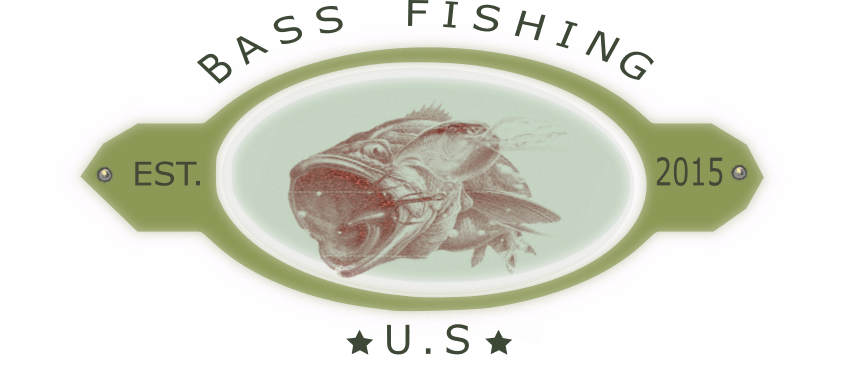
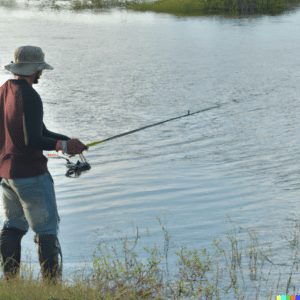
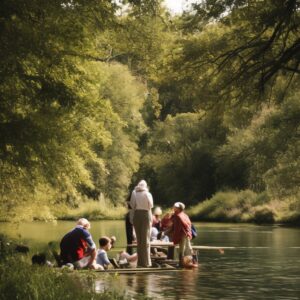
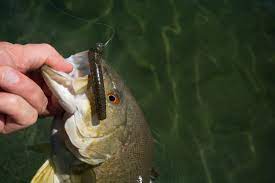
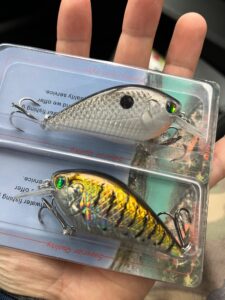


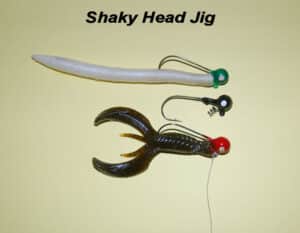
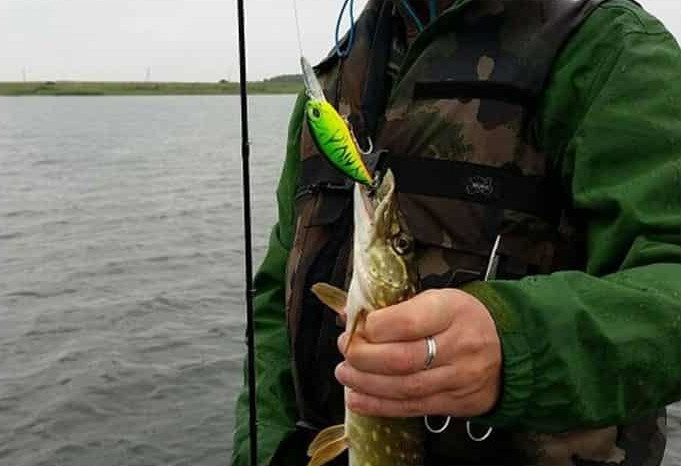

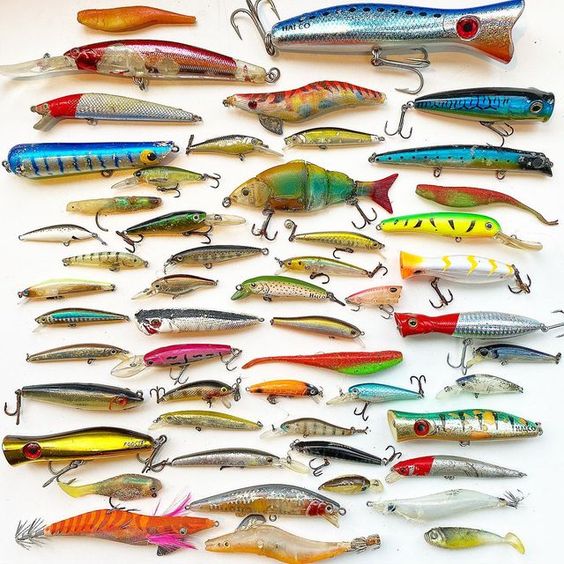
Leave a comment